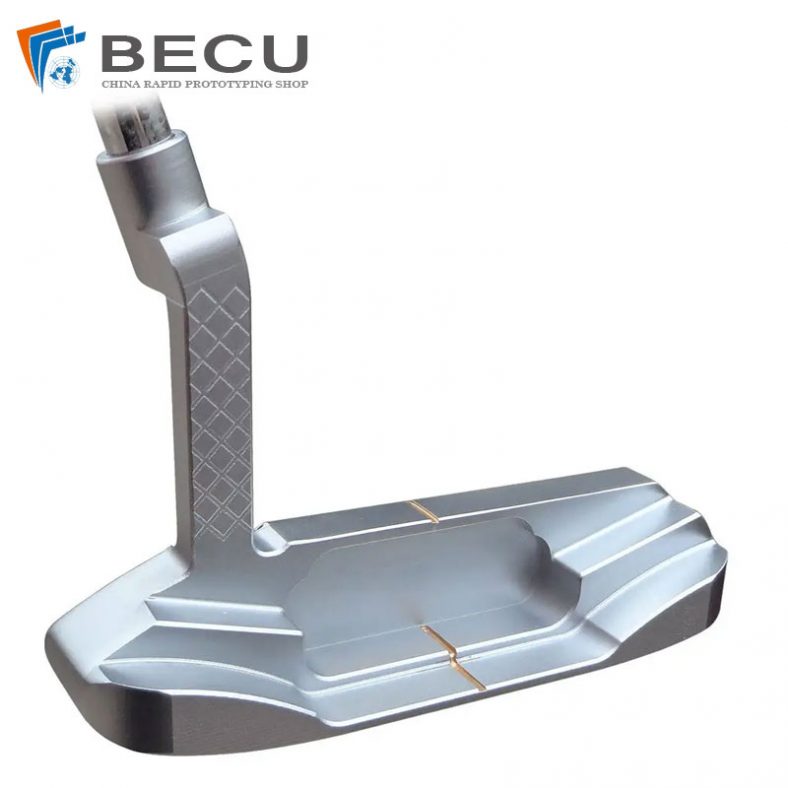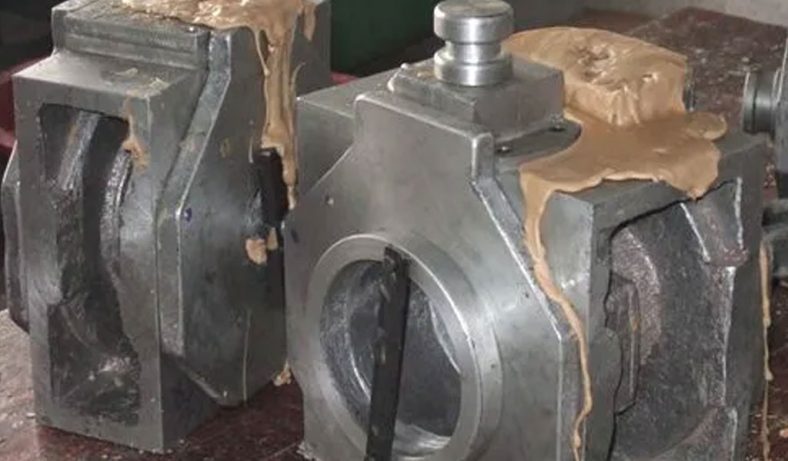
What Is Titanium Investment Casting
Investment casting, also known as precision casting or lost-wax casting, is a manufacturing process that enables the production of complex and intricately shaped metal components. This versatile technique has found significant applications in various industries, including aerospace, automotive, medical, and more. When it comes to titanium alloys, investment casting offers unique advantages in terms of producing high-quality, near-net-shape components with exceptional mechanical properties.
Titanium alloys, renowned for their impressive strength-to-weight ratio, excellent corrosion resistance, and biocompatibility, have gained widespread popularity across industries that demand lightweight, durable, and high-performance materials. However, due to their challenging machining characteristics and high melting temperatures, casting processes such as investment casting have become an attractive option for manufacturing titanium alloy components.
The investment casting process for titanium alloys follows a similar workflow as for other metals, but there are specific considerations and challenges that need to be addressed due to the unique properties of titanium.By understanding the fundamentals and intricacies of titanium alloy investment casting, manufacturers and engineers can unlock the full potential of this manufacturing method and harness the benefits of titanium alloys for their specific applications.
Titanium Casting Service – Investment Casting Titanium Parts Manufacturer
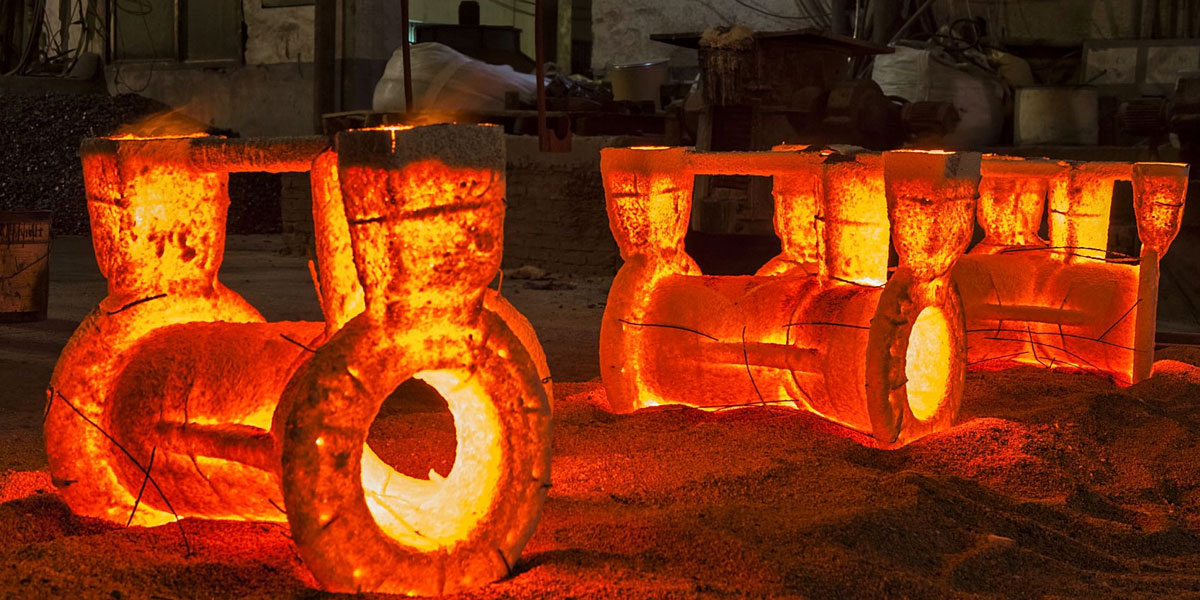
Be-Cu prototype is a leading titanium investment casting company with over 20 years of experience in the industry. We specialize in producing high-quality titanium castings for various industries, including automotive, aerospace, electronics, and more. Our state-of-the-art facilities and advanced technologies allow us to provide customized solutions that meet your specific needs. We work closely with our clients to understand their requirements and ensure that the final product meets their expectations.
At Be-Cu, we understand the importance of timely delivery and cost-effective solutions. Our team of experts ensures that your project is completed on time and within budget. We take pride in our quality control procedures, which ensure that every part produced is of the highest quality. And we use advanced techniques & equipment to monitor every stage of the production process, from design to delivery.
In addition to titanium investment casting, we also offer other services, including Lost Wax Casting Tooling manufacturing,CNC machining, surface finishing, and assembly. This makes us a one-stop-shop for all your manufacturing needs.
So, if you’re looking for a reliable partner for your titanium casting project, look no further than Be-Cu prototype. Contact us today to learn more about our services and how we can help you achieve your manufacturing goals.
Types of Investment Casting Finishes
- High Precision Titanium CNC Machining
- Polished zinc plating, nickel plating, electroplating, chrome plating
- Anodizing, phosphating, acid treatment, polishing
- Broaching, milling, drilling, tapping
- Surface grinding, sand blasting, powder coating
- Heat treatment

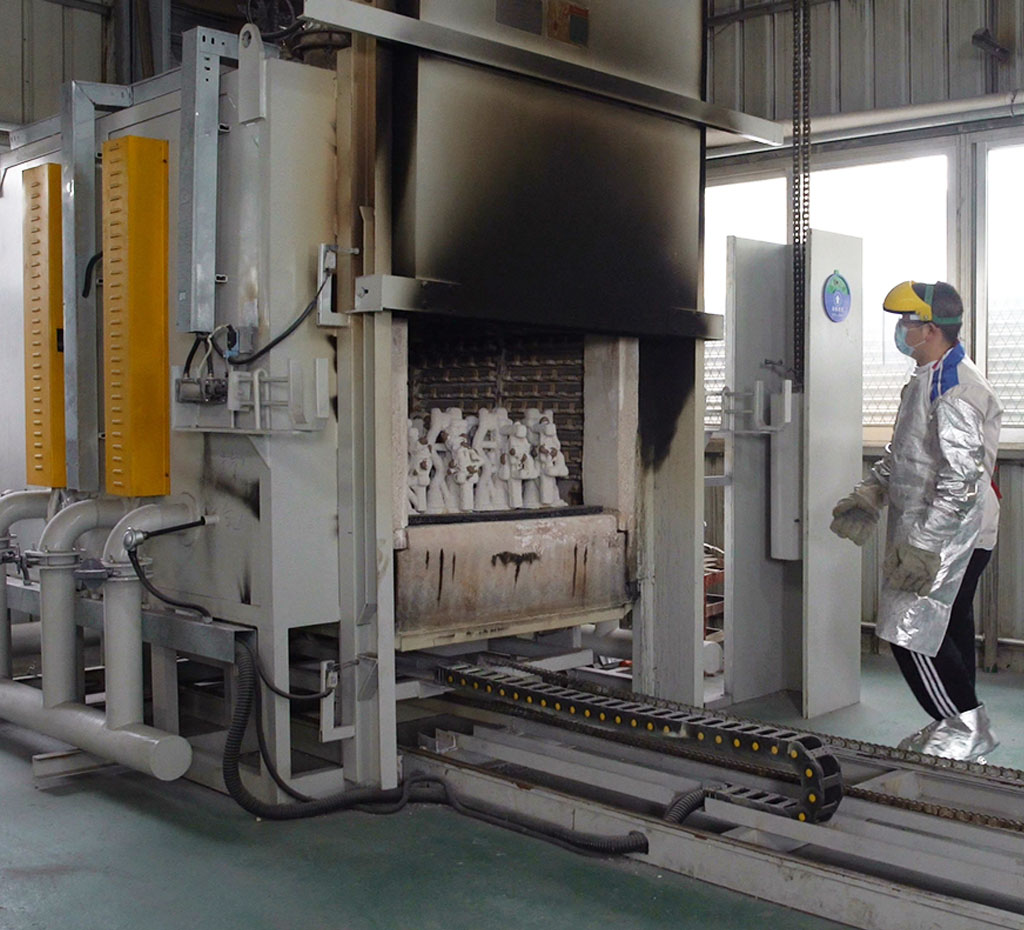
Why Choose BE-CU Investment Casting Factory?
At BE-CU Prototype, we use state-of-the-art technology to ensure the success of every project. Below is just some of the investment casting equipment that we leverage:
- Specialized shell-making equipment
- Highly automated robotic molding machines
- Horizontal vacuum precision furnace
- Vertical vacuum precision furnace
- High-pressure gas quenching vacuum furnace
- Reliable quality assurance equipment
Certifications & Quality Machining
- ISO 9001:2015 certified
- Fully compliant with the exacting requirements of our customers
- Compliance in DFARS materials sourcing requirements
- Strict compliance with PPAP and Process
- FMEA for automotive customers
- Skilled in KanBan and CMM Inspection and inventory management systems
- ITAF 16949 certified
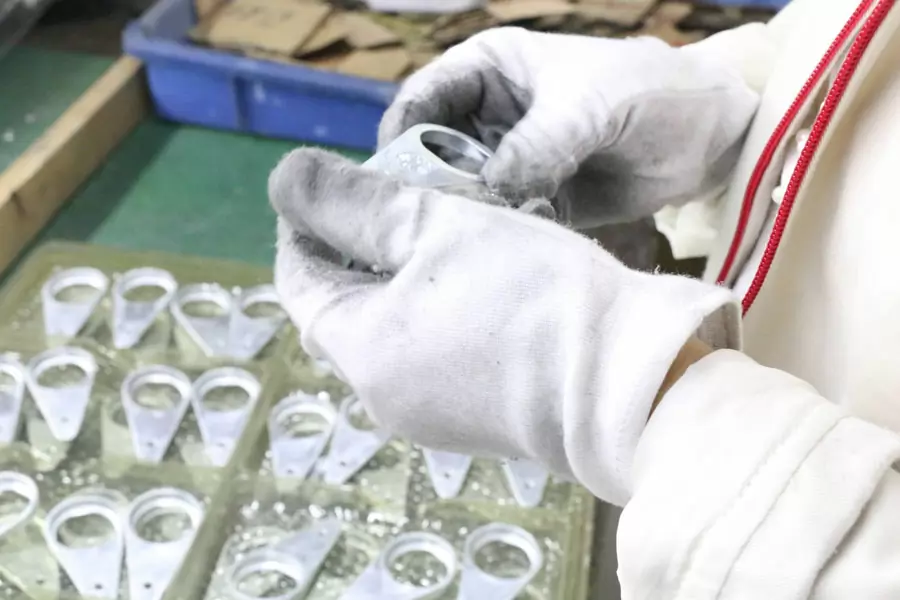
Top Titanium Investment Casting Parts & Case Studies
You have a complex titanium part design, Be-cu prototype Company can help you turn it into a reality. With the right equipment, strong technical knowledge, and a focus on quality.. From tool design to finishing and then on to shipment, Be-cu ensure that every project is completed to a high standard and that your orders are delivered on time, every time.
Titanium Casting Process Overview: Wax Pattern Creation, Ceramic Shell Formation, Casting, And Finishing
Titanium casting, specifically investment casting, is a precise and intricate manufacturing process that involves several distinct steps to create high-quality titanium alloy components. This section provides an overview of the titanium casting process, highlighting the key stages involved, from wax pattern creation to the final finishing of the cast component.
1.Wax Pattern Creation
The titanium casting process begins with the creation of a wax pattern, which replicates the desired shape of the final component. The wax pattern is typically produced using an injection molding process. In this step, molten wax is injected into a metal mold with the exact geometry of the desired component. Once the wax cools and solidifies, the mold is opened, and the wax pattern is removed.During wax pattern creation, several factors need to be considered, such as wall thickness, dimensional accuracy, and the inclusion of gating and riser systems for proper metal flow during casting. Quality control measures are also implemented to ensure that the wax patterns meet the required specifications.
2.Ceramic Shell Formation
The next stage of the titanium casting process is the creation of a ceramic shell around the wax pattern. This shell will serve as the mold into which the molten titanium alloy will be poured.The ceramic shell formation typically involves multiple steps:
- a. Assembly: The wax patterns are attached to a central wax gating system to create a tree-like structure, known as a cluster or sprue assembly. The assembly may also include ceramic cores for the creation of internal cavities.
- b. Shell Coating: The wax assembly is dipped into a ceramic slurry, which adheres to the wax surface. After coating, the assembly is covered in a fine ceramic material called stucco, which provides additional strength to the shell.
- c. Drying: The coated assembly is allowed to dry, ensuring that the ceramic shell is hardened and able to withstand the heat of the molten metal.
- d. Firing: The dried ceramic shell is fired at high temperatures to remove the wax pattern through a process called de-waxing. This leaves behind a hollow ceramic mold, which is capable of withstanding the high temperatures of the molten titanium alloy during casting.
3.Casting
Once the ceramic shell is prepared, it is ready for the casting process. The casting stage involves pouring the molten titanium alloy into the ceramic mold, which will take on the shape of the desired component.The casting process typically involves:
- a. Preheating: The ceramic shell is preheated to a specific temperature to ensure it can withstand the thermal shock of the molten metal.
- b. Melting: The titanium alloy is melted in a furnace, typically using inert gas atmospheres to prevent oxidation. Special care is taken to reach the precise temperature required for the specific titanium alloy being used.
- c. Pouring: The molten titanium alloy is poured into the preheated ceramic shell through the gating system. Gravity or vacuum-assisted methods may be employed to facilitate the metal flow and minimize defects.
- d. Solidification: After pouring, the molten metal solidifies within the ceramic shell, taking on the shape of the wax pattern.
4.Finishing
Once the cast component has solidified, it undergoes several finishing operations to achieve the desired final shape, dimensions, and surface quality.
- a. Shell Removal: The ceramic shell is carefully removed from the cast component, often using mechanical methods such as vibration or sandblasting.
- b. Cleaning: The cast component is cleaned to remove any residual ceramic material or other contaminants. This may involve various techniques such as acid etching, ultrasonic cleaning, or chemical baths.
- c. Heat Treatment: Depending on the specific titanium alloy and component requirements, heat treatment may be performed to enhance the mechanical properties, such as strength or hardness.
- d. Machining and Surface Finishing: The cast component may undergo additional machining operations, such as turning, milling, or grinding, to achieve the final dimensions and surface finish. This step ensures that the component meets the required specifications and tolerances.
- e. Inspection and Quality Control: The finished component undergoes rigorous inspection processes to verify its dimensional accuracy, integrity, and adherence to quality standards. Non-destructive testing methods such as X-ray, ultrasonic testing, or dye penetrant inspection may be employed to detect any defects or irregularities.
By following these stages of wax pattern creation, ceramic shell formation, casting, and finishing, the titanium casting process enables the production of complex and high-performance titanium alloy components used in a wide range of industries, including aerospace, automotive, medical, and more.
The Properties Of Titanium Casting
Titanium casting offers several unique properties that make it highly desirable for a wide range of applications. From its exceptional strength-to-weight ratio to its corrosion resistance and biocompatibility, titanium casting provides numerous advantages in various industries.
- Strength-to-Weight Ratio:Titanium casting exhibits an excellent strength-to-weight ratio, making it an ideal choice for applications that demand high strength with minimal weight. Compared to other metals, titanium is about 40% lighter, while still offering comparable or even superior strength. This property is crucial in industries such as aerospace and automotive, where weight reduction is essential for fuel efficiency and improved performance.
- Corrosion Resistance:Titanium casting demonstrates remarkable corrosion resistance, particularly in aggressive environments. It forms a protective oxide layer on its surface when exposed to oxygen, which provides exceptional resistance against corrosive substances, including seawater, acids, and alkalis. This corrosion resistance makes titanium casting suitable for applications in chemical processing, marine environments, and offshore industries.
- Biocompatibility:Titanium is biocompatible, meaning it exhibits compatibility with human tissues and does not elicit adverse reactions when used in medical implants or surgical instruments. It has been extensively used in the medical field for implants, such as joint replacements, dental fixtures, and prosthetics, due to its biocompatibility, low toxicity, and high strength.
- Heat Resistance:Titanium casting displays excellent heat resistance, retaining its mechanical properties even at elevated temperatures. This property is advantageous in applications where components are exposed to high temperatures, such as aircraft engine parts, gas turbines, and exhaust systems. Titanium’s high melting point and ability to withstand thermal cycling make it suitable for demanding high-temperature environments.
- Low Thermal Expansion:Titanium casting exhibits a low coefficient of thermal expansion, meaning it expands and contracts less than other metals when subjected to temperature changes. This property is beneficial in applications that require dimensional stability over a wide temperature range, such as precision instruments, optical devices, and aerospace components.
The properties of titanium casting, including its high strength-to-weight ratio, corrosion resistance, biocompatibility, heat resistance, and low thermal expansion, make it an exceptional material for a diverse range of applications.
The Applications of Titanium Casting
From aerospace and automotive to medical and chemical processing industries, titanium casting plays a significant role in enabling innovative and high-performance solutions.
1.Titanium Casting For Aerospace Industry
Titanium casting finds extensive use in the aerospace industry due to its combination of high strength, low weight, and exceptional corrosion resistance. It is used in aircraft components such as turbine blades, airfoils, landing gear, engine parts, and structural elements. Titanium’s properties contribute to improved fuel efficiency, increased payload capacity, and enhanced structural integrity in aerospace applications.
2.Titanium Casting For Automotive Industry
In the automotive industry, titanium casting is employed to produce high-performance engine components, exhaust systems, suspension parts, and other critical elements. The lightweight nature of titanium helps reduce vehicle weight, leading to improved fuel economy, enhanced performance, and reduced emissions. Titanium’s corrosion resistance is particularly advantageous in exhaust systems, where high temperatures and corrosive gases are present.
2.Titanium Casting For Medical Industry
Titanium casting plays a vital role in the medical field, especially in the production of implants and surgical instruments. Its biocompatibility, strength, and corrosion resistance make it an ideal choice for joint replacements, dental implants, orthopedic plates, and prosthetic devices. Titanium’s ability to integrate with bone and soft tissues promotes successful implantation and long-term patient outcomes.
3.Titanium Casting For Chemical Processing
Due to its outstanding corrosion resistance, titanium casting is widely used in the chemical processing industry. It is utilized in reactors, heat exchangers, valves, and pumps for handling corrosive chemicals, acids, and alkalis. Titanium’s ability to withstand aggressive environments, coupled with its low maintenance requirements, makes it an excellent material for chemical processing applications.
4.Titanium Casting For Sports and Recreation
Titanium casting finds applications in sports equipment and recreation industries. It is used in the manufacturing of bicycle frames, golf club heads, tennis racket frames, and other sports equipment. Titanium’s strength, low weight, and durability contribute to improved performance, reduced fatigue, and increased longevity in sports and recreation applications.
5.Titanium Casting For Marine Industry
The marine industry extensively utilizes titanium casting for various components exposed to seawater and harsh marine environments. It is employed in marine propulsion systems, offshore structures, seawater desalination plants, and shipboard equipment. Titanium’s corrosion resistance and ability to withstand marine conditions make it well-suited for these applications.
Rapid Prototyping And 3D Printing For Investment Casting Patterns

Rapid prototyping and 3D printing technologies have revolutionized the manufacturing industry, providing efficient and cost-effective solutions for creating investment casting patterns.
These advanced techniques offer numerous advantages over traditional pattern-making methods, enabling faster iteration, greater design complexity, and improved overall efficiency. In this section, we will explore the application of rapid prototyping and 3D printing in the production of investment casting patterns.
Rapid prototyping, also known as additive manufacturing, is a group of technologies that construct physical objects layer by layer from 3D computer-aided design (CAD) models. 3D printing is a commonly used term for rapid prototyping, as it refers to the specific process of creating a physical object using additive manufacturing techniques.
1.Traditional Pattern-Making Challenges
Traditional methods of pattern-making for investment casting, such as manual machining or wax injection, often involve time-consuming and labor-intensive processes. These methods have limitations in terms of design complexity, customization, and lead times. Additionally, they may require specialized tooling and skilled craftsmanship.
2.Advantages of Rapid Prototyping and 3D Printing for Investment Casting Patterns
Rapid prototyping and 3D printing offer several advantages in the production of investment casting patterns:
- a. Faster Iteration: Rapid prototyping allows for quick iteration and design modifications, reducing development time and accelerating the overall casting process.
- b. Complex Geometries: 3D printing enables the production of intricate and complex patterns that would be challenging or even impossible to achieve through traditional methods.
- c. Customization: Rapid prototyping allows for easy customization and design optimization, catering to specific casting requirements and reducing the need for extensive post-casting machining.
- d. Reduced Costs: By eliminating the need for specialized tooling and reducing material waste, rapid prototyping and 3D printing can significantly reduce costs associated with pattern-making.
- e. Improved Accuracy: Additive manufacturing techniques offer high precision and accuracy, ensuring that investment casting patterns are produced with the desired dimensional and geometrical specifications.
- f. Design Validation: Rapid prototyping allows for the testing of design concepts and functional prototypes, enabling engineers to validate and optimize the design before committing to production.
3.3D Printing Technologies for Investment Casting Patterns
Several 3D printing technologies are commonly used for investment casting pattern production:
- a. Stereolithography (SLA): SLA printing uses a UV laser to selectively cure liquid photopolymer resin layer by layer, creating precise and detailed patterns.
- b. Selective Laser Sintering (SLS): SLS printing service employs a high-power laser to selectively fuse powdered materials, such as nylon or polycarbonate, to create durable patterns.
- c. Binder Jetting: Binder jetting utilizes a printhead to selectively deposit a binder onto a powdered material, layer by layer, to form the pattern.
- d. Material Jetting: Material jetting works by jetting liquid photopolymer resin onto a build platform, which is then cured with UV light to form the pattern.
4.Post-Processing and Finishing
After 3D printing, investment casting patterns may require post-processing and finishing to meet the necessary standards and specifications. This can involve steps such as support removal, surface finishing, and heat treatment to enhance the pattern’s durability and surface quality.
Ongoing research and development in the field of rapid prototyping and 3D printing continue to enhance the capabilities and materials available for investment casting patterns. Advances in multi-material printing, improved accuracy, and increased production speeds contribute to the widespread adoption of these technologies in investment casting.
In conclusion, rapid prototyping and 3D printing technologies have revolutionized the production of investment casting patterns. The advantages they offer, including faster iteration, complex geometries, customization, and reduced costs, make them indispensable tools in the manufacturing industry. As these technologies continue to evolve, we can expect further advancements and applications in investment casting, enabling more efficient and innovative manufacturing processes.

